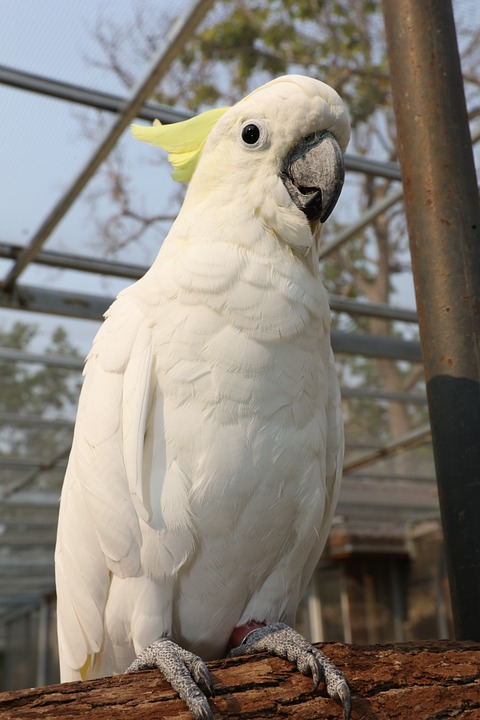Unlocking the Potential of Parrot Recall Training
Introduction:
Parrots are intelligent and social creatures that thrive on mental stimulation and interaction with their owners. Recall training, which involves teaching a parrot to fly to your hand when called, is an essential skill that not only strengthens the bond between you and your feathered friend but also provides numerous benefits for their overall well-being.
1. Laying the Foundation: Building Trust and Bonding
Establishing trust is the first step in any successful training endeavor. Spend quality time with your parrot, allowing them to become comfortable in your presence. Offer treats and gentle strokes to create positive associations. Consistency and patience are key when building trust with your parrot.
2. Creating a Safe Environment for Flight Training
Before embarking on recall training, it is crucial to create a safe space for your parrot to fly. Remove any potential hazards such as mirrors, open windows, or other pets that may cause distress or accidents. Ensure that the training area is free from clutter and provides ample room for your parrot to maneuver.
3. Step-by-Step Guide to Teaching Your Parrot to Fly to Your Hand
a. Step 1: Basic training commands
Teach your parrot simple commands like “step up” and “step down” to establish a foundation for further training. Use positive reinforcement techniques, such as offering treats or praise, to reward desired behaviors.
b. Step 2: Target training
Introduce a target stick or a small object that your parrot can easily identify. Use the target stick to guide your parrot to specific locations, gradually increasing the distance between the target and their perch.
c. Step 3: Gradual introduction to short flights
Encourage your parrot to take short flights within the controlled environment. Use the target stick or a treat to entice them to fly short distances to your outstretched hand.
d. Step 4: Introducing hand as a target
Replace the target stick with your hand as the desired destination. Continue to use positive reinforcement to reward your parrot for successfully flying to your hand.
e. Step 5: Reinforcing recall with rewards
Continue to reinforce recall by offering rewards every time your parrot successfully flies to your hand. This positive association will motivate them to repeat the behavior.
f. Step 6: Building distance gradually
Once your parrot is comfortable flying to your hand from short distances, gradually increase the distance between you and their starting point. This will strengthen their recall skills and enhance their flying abilities.
4. Troubleshooting Common Challenges
During recall training, you may encounter challenges such as reluctance, lack of motivation, fear, or setbacks. It’s important to address these issues with patience and consistency. Adapt your training techniques to suit your parrot’s individual needs and consult a avian behaviorist if necessary.
5. Frequently Asked Questions (FAQs)
To address common concerns, here are answers to frequently asked questions about teaching parrots to fly to your hand:
1. How long does it usually take to train a parrot to fly to your hand?
The timeline for training varies depending on the individual parrot and their previous training experiences. It may take anywhere from a few weeks to several months to achieve reliable recall.
2. Can any parrot be trained to recall from a distance?
While most parrots can be trained to recall from a distance, some species may be more inclined to fly longer distances. It is important to understand your parrot’s natural abilities and limitations.
3. Are there any safety precautions I should take during recall training?
Always ensure that your training environment is safe and free from potential hazards. Avoid training near open windows or in areas where your parrot may be exposed to harmful substances.
4. What are the best rewards or treats to use during training?
Choose treats that are healthy and appealing to your parrot, such as small pieces of fruits or vegetables, nuts, or specially formulated bird treats. Experiment with different options to find what motivates your parrot the most.
5. How can I prevent my parrot from flying away during outdoor training sessions?
Outdoor training should only be attempted in a secure and controlled environment. Use a harness or a flight suit to prevent your parrot from flying away unintentionally.
6. Are there any alternatives to hand recall training?
While hand recall training is the most common method, there are alternative training techniques such as whistle recall, which involves teaching your parrot to fly to a specific whistle sound.
Conclusion:
Teaching your parrot to fly to your hand through recall training is a rewarding experience that strengthens the bond between you and your feathered companion. By establishing trust, creating a safe environment, and following a step-by-step guide, you can unlock the potential of your parrot’s recall skills. Remember to be patient, consistent, and always prioritize your parrot’s safety and well-being throughout the training process.









